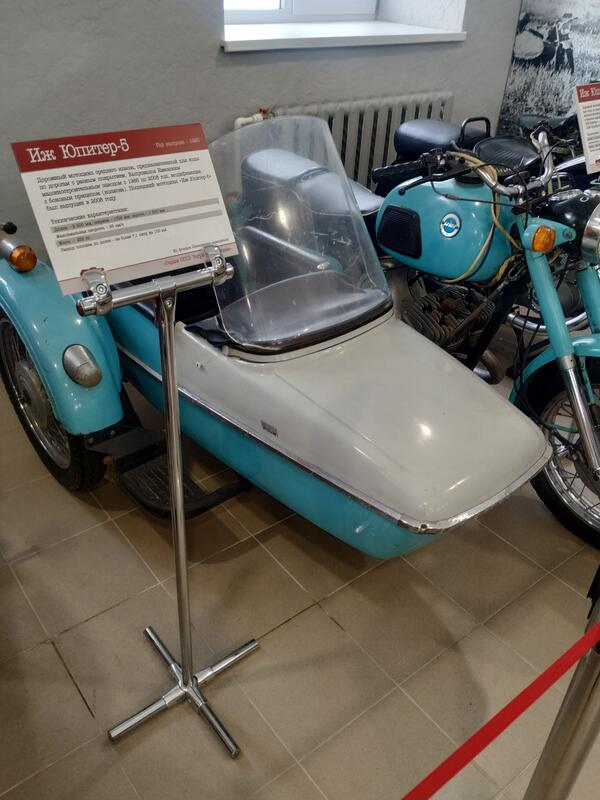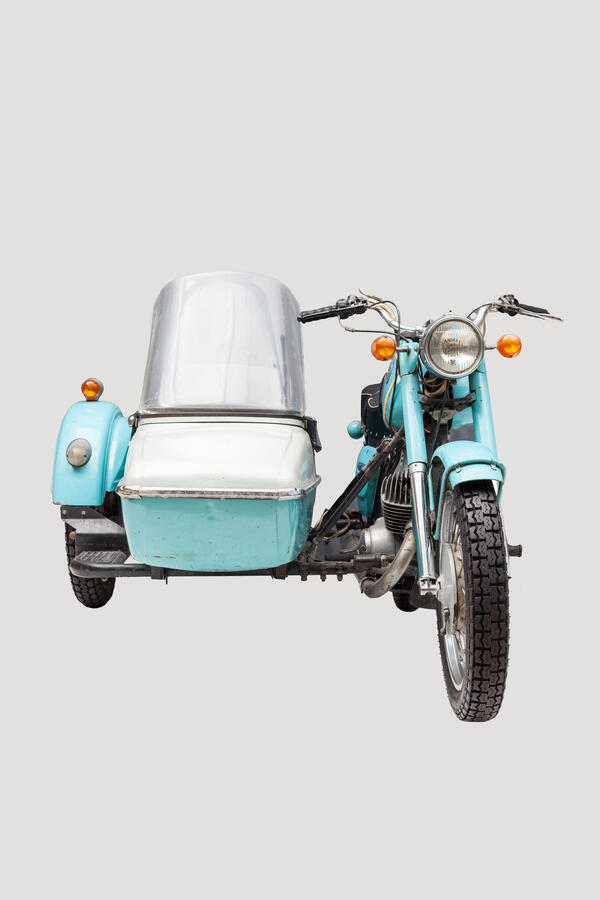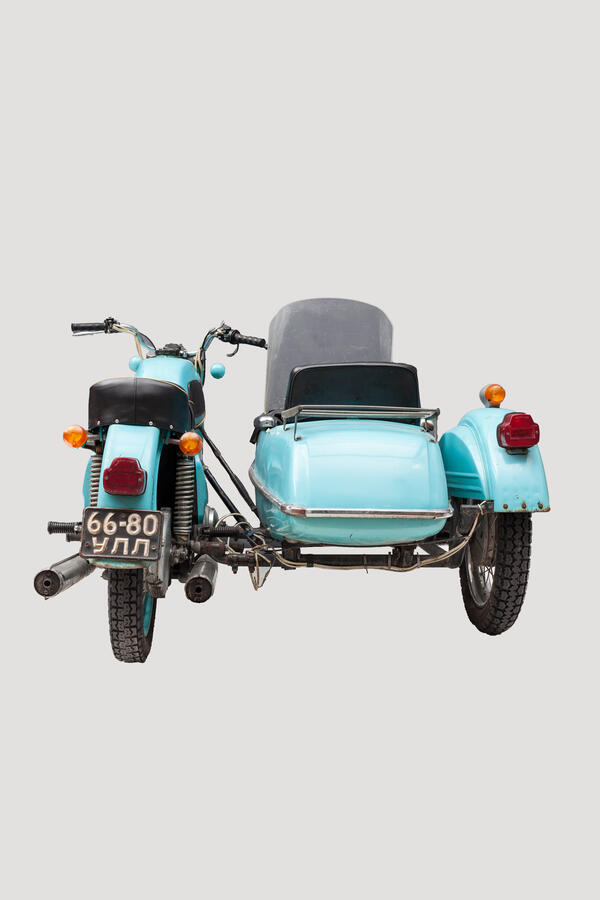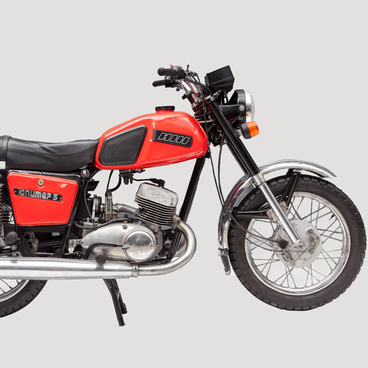The first post-war on-road Izhevsk motorcycle with a two-cylinder engine was developed by the engineers of the local machine-building plant in 1957 and 1958. Initially, the model was named the Izh-58, but it was eventually released under the name Jupiter.
The first commercial batch of 300 Izh Jupiter-3K motorcycles was produced in 1970. The letter “K” in its name referred to the fact that the motorcycle was equipped with a sidecar. The mass production of Jupiters began in 1971 and ended in 1981. In the Soviet Union, this series had one of the longest production runs, second only to the Izh Jupiter-5.
The new motorcycle had the same basic components as the Izh-56 and Izh Planeta models which used single-cylinder engines. At the same time, it received a brand-new engine — a two-cylinder two-stroke model with vertical air-cooled cylinders.
The engineers hid the carburetor and the oil bath filter behind protective covers. Many components were made compatible with the corresponding parts of the engine of the K-175 motorcycle produced at the Degtyaryov Plant in Kovrov.
The Izh Planeta-3 and Izh Jupiter-3 models were awarded the state quality mark of the USSR, and in 1975, they reached the annual production rate of 250,000 units. Over time, sidecar motorcycles became more prevalent. While 84,570 Izh Jupiter-3K and 63,355 Izh Jupiter-3 motorcycles were produced in 1972, this ratio had changed dramatically by 1978 when 171,390 sidecar motorcycles were made, and only 9,692 solos.
The third Jupiter model was equipped with the K-36D engine. Its only weakness was the contact ignition system. Without a sidecar, the motorcycle could reach a maximum speed of 120 km/h and had an average consumption rate between 3.5 and 4.0 liters per 100 km.
The motorcycle could go 400–500 km on one 18-liter tank of gas. It used a mix of the A-76 gasoline and oil. The motorcycle had a dry weight of 162 kg. The front and rear wheels were equipped with the same tires. In 1976, a sidecar motorcycle of this model cost 1,040 rubles, while the solo version cost 300 rubles less.
The first commercial batch of 300 Izh Jupiter-3K motorcycles was produced in 1970. The letter “K” in its name referred to the fact that the motorcycle was equipped with a sidecar. The mass production of Jupiters began in 1971 and ended in 1981. In the Soviet Union, this series had one of the longest production runs, second only to the Izh Jupiter-5.
The new motorcycle had the same basic components as the Izh-56 and Izh Planeta models which used single-cylinder engines. At the same time, it received a brand-new engine — a two-cylinder two-stroke model with vertical air-cooled cylinders.
The engineers hid the carburetor and the oil bath filter behind protective covers. Many components were made compatible with the corresponding parts of the engine of the K-175 motorcycle produced at the Degtyaryov Plant in Kovrov.
The Izh Planeta-3 and Izh Jupiter-3 models were awarded the state quality mark of the USSR, and in 1975, they reached the annual production rate of 250,000 units. Over time, sidecar motorcycles became more prevalent. While 84,570 Izh Jupiter-3K and 63,355 Izh Jupiter-3 motorcycles were produced in 1972, this ratio had changed dramatically by 1978 when 171,390 sidecar motorcycles were made, and only 9,692 solos.
The third Jupiter model was equipped with the K-36D engine. Its only weakness was the contact ignition system. Without a sidecar, the motorcycle could reach a maximum speed of 120 km/h and had an average consumption rate between 3.5 and 4.0 liters per 100 km.
The motorcycle could go 400–500 km on one 18-liter tank of gas. It used a mix of the A-76 gasoline and oil. The motorcycle had a dry weight of 162 kg. The front and rear wheels were equipped with the same tires. In 1976, a sidecar motorcycle of this model cost 1,040 rubles, while the solo version cost 300 rubles less.






